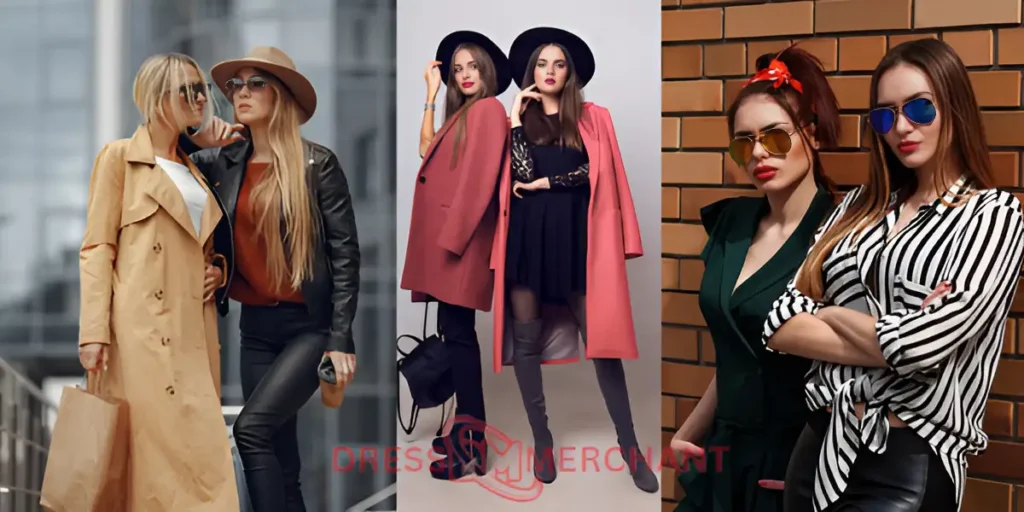Discover How To Reduce Carbon Footprint In Apparel Manufacturing with sustainable practices, energy-efficient production, and eco-friendly materials. Minimize waste, lower emissions, and adopt greener technologies to create a more environmentally responsible fashion industry. Learn key strategies to enhance sustainability, reduce resource consumption, and promote ethical manufacturing. Take action today for a cleaner, greener future in apparel production!
Thank you for reading this post, don't forget to subscribe!
1. Sustainable Material Sourcing
Choosing Low-Impact Fabrics
The fashion industry has long relied on conventional textiles such as cotton and polyester, both of which contribute heavily to environmental degradation. Conventional cotton farming requires an immense amount of water, pesticides, and fertilizers, while polyester production depends on fossil fuels and generates microplastics that pollute water bodies. To mitigate these negative impacts, eco-conscious brands are turning to sustainable alternatives such as organic cotton, bamboo, hemp, and Tencel.
- Organic cotton is cultivated without synthetic chemicals, reducing soil and water contamination while promoting biodiversity. It also consumes significantly less water compared to conventional cotton.
- Bamboo fabric is a rapidly renewable resource that grows without the need for pesticides or excessive water. When processed using closed-loop systems, it becomes a highly sustainable fabric.
- Hemp textiles are durable, biodegradable, and require minimal water and no synthetic pesticides. Additionally, hemp absorbs more carbon dioxide than other crops, making it a climate-friendly option.
- Tencel (Lyocell) is derived from sustainably sourced wood pulp and produced in an eco-friendly closed-loop process, which recycles almost all the water and solvents used in manufacturing.
By integrating these materials into their collections, brands can reduce their environmental footprint while offering high-quality, sustainable fashion choices.
Recycled and Upcycled Fabrics
The global fashion industry generates enormous textile waste, much of which ends up in landfills or incinerators. To combat this, designers and brands are increasingly incorporating recycled and upcycled fabrics into their production processes.
- Recycled polyester is made from post-consumer plastic bottles and discarded textiles, helping to divert waste from landfills and reduce reliance on virgin petroleum-based fibers.
- Repurposed denim is another sustainable innovation, as it minimizes the need for water- and energy-intensive new denim production. Brands are now utilizing discarded jeans and fabric scraps to create fresh designs without additional resource depletion.
- Upcycled materials involve creatively transforming surplus fabrics, deadstock materials, and production leftovers into new garments. This process extends the lifespan of textiles while significantly lowering the demand for virgin fibers.
By investing in recycling and upcycling initiatives, fashion brands can reduce energy consumption, lower greenhouse gas emissions, and promote circular fashion, where materials are continuously repurposed rather than discarded.
Sourcing Locally
Another crucial aspect of sustainable material sourcing is reducing the environmental impact of transportation. Importing textiles from distant regions significantly increases carbon emissions due to long-haul shipping and air freight. By sourcing raw materials locally, brands can:
- Reduce transportation-related emissions and energy use.
- Support regional textile industries, boosting local economies and job creation.
- Ensure better traceability and ethical sourcing by working directly with local suppliers.
Dress Merchant prioritizes responsible sourcing to minimize environmental impact while maintaining high standards of quality and sustainability.
2. Energy-Efficient Manufacturing Processes
As the apparel industry continues to evolve, manufacturers are focusing on energy-efficient processes to minimize environmental impact. Implementing sustainable energy solutions not only helps in reducing carbon footprints but also leads to long-term cost savings and enhanced operational efficiency.
Implementing Renewable Energy
One of the most impactful ways to enhance energy efficiency in garment manufacturing is by transitioning to renewable energy sources. Apparel factories can integrate solar panels to harness sunlight, wind turbines for wind energy, or hydroelectric power where feasible. These renewable sources provide a cleaner alternative to fossil fuels, cutting greenhouse gas emissions significantly.
- Solar Energy: Installing photovoltaic panels on factory rooftops enables manufacturers to generate their own electricity, reducing dependency on non-renewable power grids. Additionally, advancements in solar battery storage allow excess energy to be stored for nighttime or cloudy-day usage.
- Wind Power: Wind turbines can be an excellent option for large-scale garment factories located in areas with consistent wind patterns. By harnessing wind energy, companies can reduce operational costs and contribute to a greener future.
- Hydroelectric Energy: Factories near water sources can explore small-scale hydroelectric power to generate clean electricity. This method is particularly effective in regions where water flow can be regulated efficiently.
Transitioning to renewable energy not only benefits the environment but also helps apparel manufacturers achieve energy independence and avoid fluctuating fossil fuel prices. Many governments offer incentives and tax benefits for businesses that adopt renewable energy solutions, making the transition financially viable.
Optimizing Machinery and Equipment
A major source of energy consumption in apparel manufacturing is machinery, including sewing machines, dyeing units, fabric cutting machines, and finishing equipment. Optimizing these machines can lead to significant energy savings and increased efficiency.
- Upgrading to Energy-Efficient Machines: Modern sewing machines and cutting equipment are designed with energy efficiency in mind. Automated machines often consume less power while improving precision and reducing waste. Additionally, using LED lighting in workspaces instead of traditional incandescent bulbs further reduces electricity usage.
- Smart Manufacturing Systems: Incorporating AI-driven automation can optimize power consumption by adjusting machine operation based on real-time demand. Smart systems detect idle machines and power them down automatically to prevent unnecessary energy waste.
- Regular Maintenance: Ensuring that all machinery is well-maintained prevents energy leaks and maintains optimal performance. Proper lubrication, timely part replacements, and routine inspections contribute to longevity and efficiency.
By investing in energy-efficient machinery and smart manufacturing technologies, apparel manufacturers can enhance productivity while significantly reducing energy consumption.
Heat Recovery Systems
Garment production processes, especially dyeing and drying, generate a substantial amount of excess heat. Instead of letting this energy go to waste, factories can implement heat recovery systems to capture and repurpose it.
- Reusing Heat from Dyeing Processes: Dyeing fabrics requires large amounts of hot water and steam. Heat exchangers can be installed to capture excess heat from discharged water, using it to preheat fresh water for subsequent dyeing cycles. This reduces fuel consumption and lowers operating costs.
- Heat Recirculation in Drying Machines: Textile drying machines expel a considerable amount of heat. By using heat recovery technology, manufacturers can channel this expelled heat back into the drying system, improving energy efficiency without compromising fabric quality.
- Steam Condensate Recovery: In steam-based processes, condensed steam (condensate) still contains significant thermal energy. Recapturing and reusing this condensate reduces the need for additional energy input, leading to lower energy costs and more sustainable operations.
By implementing these energy-efficient practices, apparel manufacturers can significantly lower their environmental impact while improving overall operational efficiency. Sustainable energy solutions not only contribute to a cleaner planet but also enhance a company’s reputation in an increasingly eco-conscious market.
3. Eco-Friendly Dyeing and Finishing Techniques
The textile industry has long relied on traditional dyeing and finishing methods that consume excessive water, energy, and chemicals. However, with growing environmental concerns and increasing consumer demand for sustainable fashion, brands are turning to eco-friendly alternatives. Innovative dyeing and finishing techniques help reduce environmental impact while maintaining high-quality fabric performance and aesthetics.
Natural and Low-Water Dyeing
Traditional dyeing processes require massive amounts of water to dissolve dyes, rinse fabrics, and remove excess color. This leads to high water wastage and contamination, especially when toxic chemicals are used. To combat these issues, sustainable brands are adopting plant-based dyes, waterless dyeing technologies, and digital printing as viable solutions.
- Plant-Based and Natural Dyes: Many eco-conscious brands are rediscovering the benefits of plant-based dyes derived from sources such as indigo, turmeric, pomegranate, and madder root. These dyes eliminate the need for synthetic chemicals and significantly reduce pollution.
- Waterless Dyeing Technologies: Innovations such as supercritical CO₂ dyeing eliminate water from the dyeing process altogether. This method, developed by companies like DyeCoo, uses carbon dioxide in a high-pressure state to infuse dye into fabric without water or harmful additives.
- Digital and Sublimation Printing: Instead of submerging fabrics in dye baths, digital and sublimation printing techniques directly apply color to the fabric surface, requiring far less water and energy. These methods also improve design precision and reduce waste.
Reducing Chemical Usage in Fabric Treatment
In conventional textile processing, harsh chemicals are used to achieve softness, wrinkle resistance, and colorfastness. However, these chemicals can be hazardous to both human health and the environment. Sustainable alternatives focus on low-impact, biodegradable chemicals and enzyme-based finishing to create eco-friendly fabrics.
- Low-Impact Chemicals: These dyes and auxiliaries are free from toxic heavy metals, formaldehyde, and aromatic amines. They break down more easily in wastewater, reducing pollution.
- Biodegradable Fabric Softeners and Treatments: Eco-friendly softeners and finishes made from natural oils, such as soybean or coconut-based compounds, provide the same feel and durability as synthetic alternatives.
- Enzyme-Based Finishing: Enzymes offer a green alternative to chemical treatments by naturally modifying fabric properties. For example, cellulase enzymes can provide a stone-washed effect on denim without using pumice stones or harsh acids.
Ozone and Plasma Treatments
Advanced ozone and plasma technologies are revolutionizing textile finishing by significantly cutting down water and chemical use.
- Ozone Treatment: Ozone gas is used to bleach and distress fabrics without the need for traditional chlorine-based processes. This method is particularly effective for creating faded denim looks with minimal water and energy consumption.
- Plasma Treatment: Plasma technology alters the surface of textiles at a molecular level, enhancing dye absorption and fabric durability while eliminating the need for chemical pre-treatments.
By integrating these sustainable techniques, brands like Dress Merchant are leading the way in eco-conscious fashion, producing high-quality garments with minimal environmental impact.
4. Efficient Water Management
Water is a crucial resource in garment manufacturing, especially in processes such as dyeing, washing, and finishing. Unfortunately, traditional methods often lead to excessive consumption and pollution. Implementing efficient water management strategies not only conserves resources but also reduces environmental impact and operational costs. Sustainable practices such as water recycling, rainwater harvesting, and innovative dry processing techniques are transforming the industry.
Water Recycling and Treatment
Garment manufacturing requires large volumes of water, especially for dyeing and washing fabrics. Without proper treatment, wastewater can contain harmful chemicals, dyes, and heavy metals, leading to severe environmental damage. To address this, factories can implement water filtration, recycling systems, and wastewater treatment plants.
- Filtration and Purification: Advanced filtration systems, including reverse osmosis and membrane bioreactors, help remove contaminants from used water, allowing it to be reused in production.
- Zero Liquid Discharge (ZLD) Systems: Some manufacturers adopt ZLD systems, which treat and recycle all wastewater, leaving no liquid waste.
- Chemical-Free Treatment: Modern eco-friendly techniques, such as biological treatment and electrocoagulation, help reduce toxic chemicals in discharged water.
By integrating these technologies, factories can drastically reduce water wastage and comply with environmental regulations.
Rainwater Harvesting
To further reduce dependence on freshwater sources, garment factories can implement rainwater collection systems. This strategy is especially beneficial in regions where water scarcity is a concern.
- Storage Tanks and Filtration: Collected rainwater can be stored in large tanks, purified, and used in dyeing, cooling, or sanitation.
- Reduced Groundwater Usage: By utilizing rainwater, factories can lower their reliance on groundwater, preserving natural reserves.
- Cost Savings: Investing in rainwater harvesting systems can lead to significant long-term savings by cutting down water bills.
Many forward-thinking manufacturers are incorporating rooftop collection systems and surface runoff harvesting to optimize water usage.
Dry Processing Techniques
Traditional garment processing methods, such as stonewashing and acid washing, consume vast amounts of water and generate wastewater. However, modern advancements allow manufacturers to reduce or eliminate water usage in these processes.
- Laser Technology: Instead of traditional wet treatments, laser techniques can create distressed and faded denim effects without water or chemicals.
- Foam Dyeing: This revolutionary method replaces water-based dyes with foam-based applications, drastically cutting water use by up to 80%.
- Ozone Treatment: Ozone gas can replace conventional bleach in fabric whitening and softening processes, reducing both water consumption and chemical pollution.
By integrating these innovative dry processing methods, the textile industry can significantly reduce its environmental footprint while maintaining high-quality production standards.
5. Sustainable Packaging and Logistics
As environmental concerns continue to rise, sustainable packaging and logistics have become essential for the apparel industry. Implementing eco-friendly packaging solutions and optimizing logistics can significantly reduce the carbon footprint, aligning with global sustainability goals and consumer expectations.
Eco-Friendly Packaging
One of the most impactful steps toward sustainability is the shift from traditional plastic-based packaging to biodegradable, compostable, or recycled alternatives. Using sustainable materials such as plant-based bioplastics, recycled cardboard, and paper-based wraps helps reduce landfill waste and environmental pollution. Many brands are now embracing compostable mailers, reusable fabric pouches, and minimalistic wrapping methods to lower their ecological impact.
Additionally, eliminating excessive plastic in packaging plays a vital role in sustainability. Single-use plastics contribute to ocean pollution and take hundreds of years to decompose. By replacing plastic poly bags with recycled paper or reusable garment bags, brands can significantly reduce plastic waste. Moreover, opting for soy-based inks and water-soluble adhesives in packaging materials ensures that all components are environmentally friendly and easy to recycle.
Carbon-Neutral Shipping
The logistics sector contributes heavily to greenhouse gas emissions due to fuel consumption and transportation-related activities. To combat this, apparel brands can adopt carbon-neutral shipping practices, such as:
- Investing in Carbon Offsetting Programs – Companies can neutralize their emissions by supporting reforestation projects, renewable energy initiatives, and carbon credit programs. These efforts help balance out the environmental impact of shipping.
- Utilizing Electric and Hybrid Delivery Vehicles – Switching to electric or hybrid delivery fleets significantly cuts emissions compared to conventional diesel-powered trucks. Some leading brands have started integrating electric cargo bikes for last-mile deliveries in urban areas to further minimize their carbon footprint.
- Optimizing Supply Chain Efficiency – Consolidating shipments and reducing empty truck miles can improve logistics sustainability. By grouping orders and utilizing strategically located fulfillment centers, companies can decrease the number of trips required for deliveries, cutting fuel usage and emissions.
- Encouraging Sustainable Shipping Choices for Customers – Offering eco-friendly delivery options, such as slower, consolidated shipping, can help reduce environmental impact. Customers who prioritize sustainability may opt for these choices when provided with clear information about their benefits.
Minimalist Packaging Designs
Another key aspect of sustainable logistics is reducing the weight and volume of packaging. Excessive packaging not only generates unnecessary waste but also increases transportation emissions due to the added weight. By adopting minimalist designs, brands can significantly lower the materials used while still ensuring product protection.
Dress Merchant prioritizes lightweight, sustainable packaging that minimizes environmental impact without compromising functionality. By carefully designing packaging to use fewer layers, smaller dimensions, and recyclable materials, the company ensures a greener supply chain while meeting modern sustainability standards.
Incorporating sustainable packaging and logistics practices is no longer an option but a necessity for brands looking to stay competitive in an eco-conscious market. By embracing these strategies, apparel businesses can reduce waste, lower emissions, and align with global sustainability efforts while enhancing their brand reputation.
6. Ethical and Responsible Manufacturing
Fair Trade and Ethical Labor Practices
Sustainability in the textile and garment industry goes beyond using eco-friendly materials; it also encompasses ethical labor practices. Ensuring fair wages, providing safe and healthy working conditions, and upholding workers’ rights are fundamental to a responsible supply chain.
Fair trade principles advocate for equitable treatment of workers, eliminating exploitative practices such as child labor, forced labor, and wage theft. Brands committed to sustainability prioritize transparency by disclosing their supply chain practices and collaborating with organizations that uphold ethical labor standards.
Furthermore, companies that invest in their workforce foster a more productive and motivated team. Offering fair wages, reasonable working hours, and professional development opportunities not only improve workers’ quality of life but also enhance the industry’s reputation. Consumers are increasingly aware of labor issues, and brands that demonstrate commitment to ethical labor practices build stronger trust and customer loyalty.
Lean Manufacturing Principles
Lean manufacturing is a strategic approach designed to minimize waste, optimize efficiency, and reduce environmental impact. This method emphasizes streamlining production processes, ensuring that resources such as raw materials, energy, and labor are utilized effectively. One of the key aspects of lean manufacturing is reducing fabric waste—cutting patterns efficiently, repurposing leftover materials, and recycling textile scraps contribute to a more sustainable production cycle.
Another vital component is just-in-time (JIT) production, where manufacturers produce only what is needed to meet demand, avoiding overproduction and excess inventory. This approach significantly reduces material wastage, lowers costs, and enhances supply chain efficiency. Additionally, adopting lean principles helps reduce energy consumption and carbon emissions by optimizing machinery usage and decreasing the need for frequent transportation.
Many companies are also exploring circular economy practices, where end-of-life products are repurposed or recycled to create new textiles, further reducing environmental footprints. By integrating lean manufacturing, businesses not only contribute to sustainability but also improve profitability and operational efficiency.
Third-Party Sustainability Certifications
Independent sustainability certifications play a crucial role in ensuring accountability and transparency in the textile industry. Certifications such as GOTS (Global Organic Textile Standard) verify that organic fibers meet stringent ecological and social criteria, from raw material sourcing to final product labeling.
OEKO-TEX Standard 100 certifies that textiles are free from harmful substances, ensuring product safety for consumers and workers alike. Fair Trade certification guarantees ethical labor practices, supporting fair wages, safe conditions, and community development initiatives.
These certifications provide consumers with the assurance that the products they purchase align with ethical and environmental standards. Additionally, businesses that obtain third-party certifications gain a competitive edge, as modern consumers prefer brands that demonstrate genuine commitment to sustainability.
By embracing ethical and responsible manufacturing, companies contribute to a more sustainable future while building trust, efficiency, and long-term profitability.
7. Reducing Textile Waste
The fashion industry is one of the largest contributors to textile waste, with millions of tons of fabric discarded annually. Implementing sustainable strategies to minimize waste not only benefits the environment but also enhances a brand’s reputation and cost efficiency. By integrating zero-waste pattern making, upcycling initiatives, and take-back programs, brands can significantly reduce their environmental impact.
Zero-Waste Pattern Making
One of the most effective ways to reduce textile waste is through zero-waste pattern making, a design approach that ensures every inch of fabric is utilized efficiently. Traditional garment production often leaves behind significant scraps that end up in landfills, but advanced software allows designers to optimize pattern layouts to minimize waste.
By using computer-aided design (CAD) software, brands can arrange patterns like puzzle pieces to make the most of every fabric roll. Additionally, digital cutting methods, such as laser cutting and automated fabric-cutting machines, ensure precise cuts, eliminating unnecessary scraps. Some designers even create zero-waste garments, where pattern pieces are designed to fit together seamlessly without generating excess material.
Upcycling and Fabric Repurposing
Rather than discarding fabric scraps, brands can incorporate upcycling initiatives to transform waste into new, valuable products. Upcycling involves reimagining leftover materials into new fashion pieces, accessories, or decorative elements. For example:
- Turning fabric scraps into accessories such as headbands, scarves, or tote bags.
- Creating artistic patchwork designs for clothing, adding a unique and trendy aesthetic.
- Repurposing textiles into home decor, such as cushion covers, quilts, or rugs.
Leading sustainable brands, including Dress Merchant, embrace creative ways to repurpose materials, ensuring that their production process is as eco-friendly as possible. By adopting upcycling strategies, brands not only reduce textile waste but also offer consumers one-of-a-kind, limited-edition designs that promote sustainability.
Take-Back and Recycling Programs
Encouraging customers to participate in take-back and recycling programs is another effective method to reduce textile waste. These programs involve collecting old, unwanted garments and repurposing them into new clothing, industrial materials, or insulation.
Many fashion brands now offer incentives such as discounts, store credits, or exclusive deals to customers who return their used clothing for recycling. For instance, some companies partner with textile recycling organizations to process old garments into reusable fibers.
Additionally, advancements in fiber-to-fiber recycling technology allow brands to break down used textiles into raw materials, which can then be spun into new fabrics. By integrating these programs, fashion brands contribute to a circular economy where materials are continuously reused rather than discarded.
8. Technology and Innovation in Sustainability
In the modern era, technology plays a crucial role in driving sustainable practices within the fashion and textile industry. As environmental concerns grow, brands are increasingly leveraging innovative solutions to reduce their carbon footprint, enhance transparency, and optimize resource efficiency. Below are some of the most impactful technological advancements shaping sustainability in the fashion industry.
AI-Powered Supply Chain Optimization
Artificial intelligence (AI) is revolutionizing supply chain management by providing data-driven insights that help fashion brands operate more efficiently and sustainably. AI-driven analytics allow businesses to predict consumer demand with remarkable accuracy, thereby reducing overproduction—a major contributor to textile waste. By producing only what is necessary, brands can significantly decrease excess inventory that often ends up in landfills or incinerators.
Moreover, AI helps optimize logistics by selecting the most fuel-efficient transportation routes, minimizing emissions from shipping and distribution. Smart warehousing solutions powered by AI further contribute to sustainability by improving inventory management, reducing energy consumption, and enhancing overall operational efficiency. Some AI systems also facilitate sustainable sourcing by evaluating supplier practices and identifying the most environmentally friendly options.
Blockchain for Transparency
Consumers today are more conscious than ever about where their products come from, and blockchain technology provides a powerful solution for ensuring supply chain transparency. Blockchain creates a secure, immutable digital ledger that records every stage of a product’s journey—from raw material sourcing to the final sale.
This technology enables brands to verify ethical labor practices, confirm the use of sustainable materials, and provide consumers with detailed insights into the production process. By simply scanning a QR code, customers can access information about the origins of their garments, including the environmental and social impact of their production. Blockchain also helps combat greenwashing, ensuring that sustainability claims are backed by verifiable data.
3D Virtual Prototyping
Traditional garment sampling processes involve multiple rounds of physical prototypes, resulting in significant fabric waste and emissions from sample shipments. 3D virtual prototyping offers a sustainable alternative by allowing designers to create and refine digital models of garments before producing physical samples.
With advanced simulation software, designers can adjust colors, textures, and patterns in a virtual space, eliminating the need for unnecessary material usage. This innovation not only accelerates the design process but also significantly reduces water consumption, energy use, and carbon emissions associated with traditional prototyping.
Additionally, virtual fashion shows and digital clothing collections are emerging as sustainable alternatives to traditional runway events, further minimizing waste and resource consumption.
9. Consumer Education and Awareness
In today’s fashion industry, consumer behavior is one of the most powerful driving forces behind sustainability efforts. Educating consumers about the principles of sustainable fashion can significantly impact their purchasing choices and encourage responsible buying habits.
This can help reduce waste, promote ethical sourcing, and foster a shift toward slower, more conscious consumption. One way to start is by raising awareness about the concept of slow fashion, which contrasts sharply with the fast fashion model, known for its mass production and rapid consumption cycle.
Slow fashion focuses on quality over quantity, craftsmanship, and the durability of materials, thereby encouraging consumers to make more thoughtful decisions when purchasing clothing. By understanding the long-term benefits of investing in higher-quality items, consumers can make choices that are not only better for the environment but also more cost-effective over time.
Additionally, educating consumers on the importance of garment care plays a pivotal role in extending the life of their clothing. Simple actions, such as following washing instructions, repairing garments instead of discarding them, and reducing the frequency of dry cleaning, can drastically reduce the environmental footprint associated with clothing.
Consumers can also be encouraged to adopt more sustainable alternatives, such as choosing fabrics made from organic materials, or garments designed with eco-friendly dyes and low-impact production methods.
By shifting the mindset towards caring for what we already own, the overall demand for new clothing decreases, contributing to a reduction in waste.
Transparency in Sustainability Efforts
To truly drive change in the industry, brands must prioritize transparency in their sustainability efforts. Consumers are increasingly seeking brands that openly communicate their commitment to ethical and sustainable practices.
A transparent approach allows consumers to make informed choices and fosters trust between the brand and its audience. Brands like Dress Merchant, for example, actively provide detailed insights into their sustainability initiatives.
By openly sharing information about their supply chain, fabric sourcing, energy usage, and waste reduction efforts, brands can build a reputation for being responsible and trustworthy.
This level of transparency not only helps consumers feel confident in their purchasing decisions but also sets a benchmark for other companies to follow, creating a ripple effect across the industry.
When brands openly discuss their sustainability practices, it can also highlight areas where there is still room for improvement. This openness allows consumers to hold companies accountable and encourages continuous progress towards better environmental and social practices.
Ultimately, brands that embrace transparency will find that their efforts to go green resonate more deeply with today’s conscious consumers, helping to create long-term brand loyalty.
Promoting Circular Fashion
An essential component of sustainable fashion is the promotion of circular fashion. This concept revolves around extending the life cycle of garments through strategies like second-hand shopping, clothing rental services, and resale platforms.
By encouraging consumers to buy pre-owned items or rent clothing for special occasions, the demand for new clothing decreases, which in turn helps to reduce the environmental impact of production. Clothing rental services, for instance, offer consumers the opportunity to wear high-quality garments without the need for long-term ownership, leading to fewer items being thrown away after just a few uses.
Resale platforms are another effective way to keep clothing in circulation longer. As more people embrace second-hand shopping, they contribute to the reduction of waste and the extension of a garment’s useful life.
These platforms also provide an affordable alternative to buying new clothing, making sustainability more accessible to a wider range of consumers. Brands that actively promote circular fashion create a culture of reuse and recycling, which can significantly lessen the environmental impact of the fashion industry.
The circular fashion model encourages consumers to view their clothing as valuable resources that can be reimagined and re-worn, fostering a more sustainable and eco-conscious approach to fashion.
10. Government Regulations and Industry Collaboration
Complying with Environmental Regulations
Adhering to both international and regional environmental regulations is a key responsibility for businesses in the garment industry. These regulations are designed to ensure that companies are minimizing their negative impact on the environment, particularly in areas such as carbon emissions, water usage, and waste management.
For instance, many countries have implemented laws that mandate companies to reduce their carbon footprints and adopt more sustainable practices. By complying with these regulations, businesses can contribute to the global goal of reducing carbon emissions and mitigating climate change.
Furthermore, these laws often provide clear guidelines for waste disposal, recycling, and the use of hazardous materials, which help businesses ensure that their operations are environmentally responsible.
Companies that take a proactive approach in adhering to these laws not only contribute to a healthier planet but also demonstrate their commitment to sustainability, which can enhance their brand image and attract eco-conscious consumers.
Partnerships for Sustainability
Collaborating with various stakeholders, including environmental organizations, textile innovators, and governmental bodies, plays a crucial role in driving sustainability within the garment industry. These partnerships foster the exchange of knowledge, resources, and expertise, helping businesses implement innovative practices that reduce their environmental footprint.
By working together, companies can access new technologies and materials that promote sustainability. For example, partnerships with textile innovators may lead to the development of eco-friendly fabrics or more efficient production techniques that reduce waste and energy consumption.
Additionally, collaborating with environmental organizations can provide businesses with insights into best practices for sustainability, as well as the opportunity to participate in industry-wide initiatives focused on carbon footprint reduction. Governmental partnerships can also help businesses stay ahead of regulatory changes and align their practices with emerging environmental policies.
Through these collaborations, companies can not only improve their own sustainability efforts but also contribute to creating a more sustainable and responsible garment industry as a whole.
Industry-Wide Sustainability Goals
In the modern garment industry, achieving sustainability is not just about individual efforts but about working together as an industry to tackle common challenges. Joining global initiatives like the Sustainable Apparel Coalition (SAC) and the Fashion Pact helps companies align themselves with a collective commitment to measurable sustainability targets.
These initiatives bring together major players in the fashion and textile sectors to set industry-wide goals related to environmental impact, social responsibility, and ethical labor practices. By participating in these global initiatives, businesses demonstrate their commitment to a shared vision of sustainability and are held accountable to achieving real, tangible results.
For example, the SAC’s Higg Index provides a framework for assessing the environmental and social impact of products, enabling companies to make more informed decisions about their supply chains. Similarly, the Fashion Pact focuses on addressing critical environmental issues such as climate change, biodiversity, and oceans.
By aligning with these organizations, businesses not only help to drive systemic change in the industry but also position themselves as leaders in the transition toward a more sustainable and responsible future. Joining these initiatives can enhance a company’s reputation, increase consumer trust, and ultimately support long-term success in an increasingly environmentally conscious market.
Conclusion: How to reduce carbon footprint in apparel manufacturing
Reducing the carbon footprint in apparel manufacturing is not just an environmental responsibility but also a strategic move toward sustainable growth and long-term industry viability. By adopting energy-efficient technologies, integrating renewable energy sources, optimizing production processes, minimizing waste, and sourcing eco-friendly raw materials, manufacturers can significantly cut emissions while maintaining quality and profitability.
Collaboration across the supply chain, transparency, and continuous innovation are key to driving meaningful change. As consumers increasingly prioritize sustainability, embracing these practices positions apparel brands as leaders in the global movement toward a greener, more ethical fashion industry. The journey toward carbon neutrality may be challenging, but with collective action and commitment, the apparel sector can play a pivotal role in shaping a more sustainable future.













